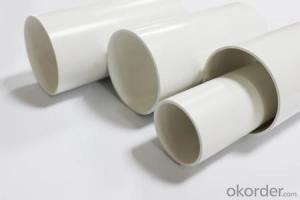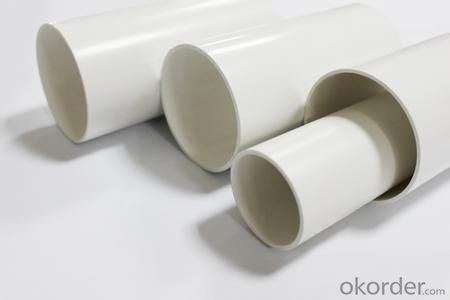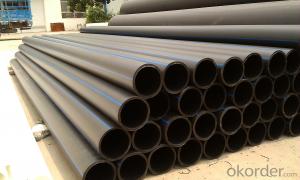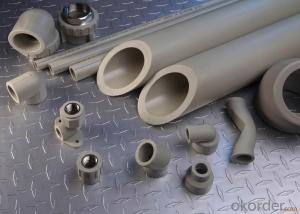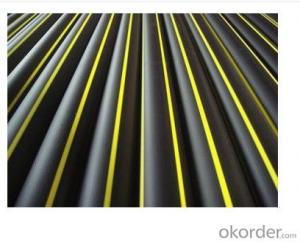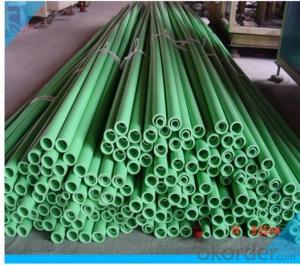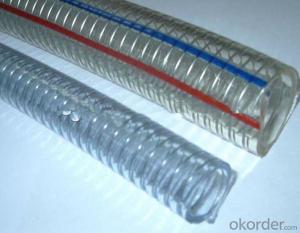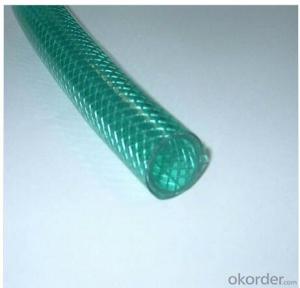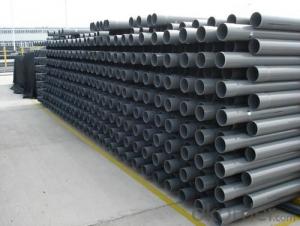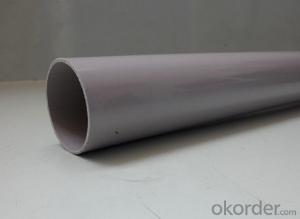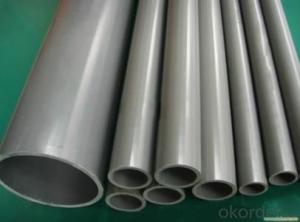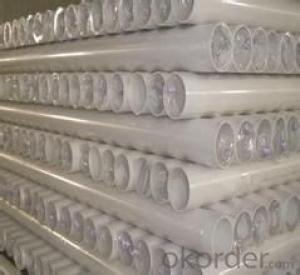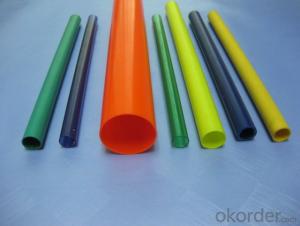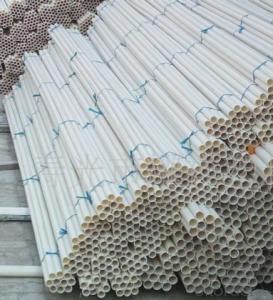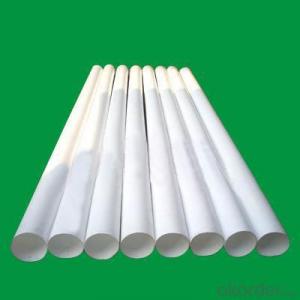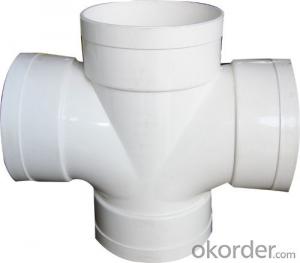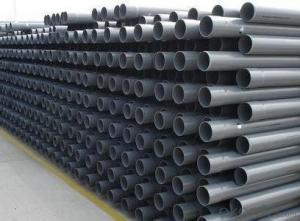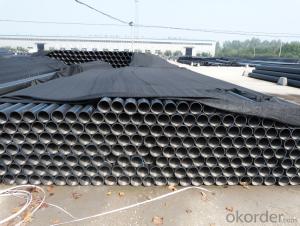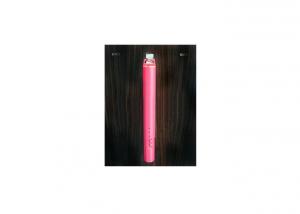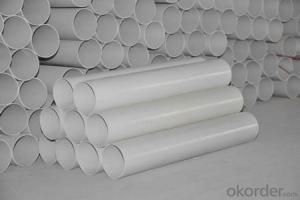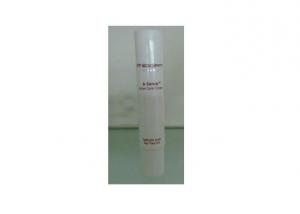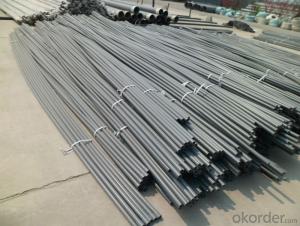PVC Pipe ASTM SCH80 Plastic Tubes
- Loading Port:
- China Main Port
- Payment Terms:
- TT OR LC
- Min Order Qty:
- -
- Supply Capability:
- -
OKorder Service Pledge
OKorder Financial Service
You Might Also Like
Specifications
pvc pipe
Water supply pvc pipe
Water discharge pvc pipe
Plastic PN10 and PN16 pvc pipe
DIN8077, DIN8078, ISO 15874 pvc pipe
Our pipes and fittings can be made according and conforming to the following International Standards:
1) American standard (ASTM Sch 40 & Sch 80, SDR 21, SDR 26, SDR41)
2) British standard (BS 3505, BS 5255, 4515)
3) Singaporean standard (SS 141, SS 272, SS 213)
4) Australian standard (AS 1477, AS 1415)
5) National standard (GB 10002, GB 5836, GB 14823, GB 13664)
6) International standard (ISO 4422, ISO 3633, IEC 614, GY 3050)
PVC Pipe Features
Non-conductive: Good insulation, assuring a safe system
Smooth surface: Small friction coefficient to ensure the cables go through smoothly
Fire resistance: Self-extinguishing, do not support combustion
Corrosion Resistance: Resistant to acids, bases and salts, assuring a lower maintenance cost and a longer performance life
Impact strength: Resistant to compression and impact, suitable to be buried in concrete
Easy Installation: solvent cement and threading joining
Usage:Electric wires installation, Supply water, Irragation Water, Drainage
- Q: Can plastic tubes be used for air conditioning systems?
- Yes, plastic tubes can be used for air conditioning systems. They are commonly used as a cost-effective and lightweight alternative to traditional metal tubes. Plastic tubes are durable, resistant to corrosion, and provide excellent insulation properties for efficient air conditioning.
- Q: Can plastic tubes be used for architectural installations?
- Yes, plastic tubes can be used for architectural installations. They are often used for temporary structures, such as exhibition displays or event installations. Plastic tubes offer flexibility in design, are lightweight, and can be easily shaped and manipulated to create unique architectural features. Additionally, they can be transparent or colored, allowing for creative lighting effects. However, it is important to consider the specific requirements of the installation and the durability of the plastic material to ensure it meets safety standards and can withstand environmental conditions.
- Q: Are plastic tubes suitable for hydroponic systems?
- Yes, plastic tubes are suitable for hydroponic systems. They are commonly used as a cost-effective and versatile option for transporting water and nutrients to the plants in a hydroponic setup. Plastic tubes are lightweight, easy to install, and resistant to corrosion, making them a practical choice for hydroponic gardening.
- Q: Can plastic tubes be used for pneumatic conveyance?
- Yes, plastic tubes can be used for pneumatic conveyance.
- Q: Can plastic tubes be used for water supply systems?
- Yes, plastic tubes can be used for water supply systems. Plastic pipes, such as PVC (polyvinyl chloride) and PEX (cross-linked polyethylene), are commonly used in residential and commercial water supply systems due to their durability, flexibility, and resistance to corrosion. They are lightweight, easy to install, and can handle high-pressure water flows efficiently. Additionally, plastic pipes are less prone to leaks and can last for many years, making them a popular choice for water supply networks.
- Q: Can plastic tubes be used for storing and transporting hazardous materials?
- Yes, plastic tubes can be used for storing and transporting hazardous materials. However, it is crucial to ensure that the plastic tubes are made from suitable materials that are resistant to the specific hazardous material being stored or transported. Additionally, proper safety measures, such as appropriate labeling and compliance with regulations, should be followed to minimize any risks associated with the handling of hazardous materials.
- Q: How do you prevent plastic tubes from warping in direct sunlight?
- One way to prevent plastic tubes from warping in direct sunlight is to use UV-resistant or weather-resistant plastic materials. These types of plastics are specifically designed to withstand prolonged exposure to sunlight without warping or deforming. Additionally, you can also apply a protective coating or paint with UV inhibitors to the surface of the tubes, which can provide an extra layer of protection.
- Q: My little sister is worried! Please help! He already chew on a piece of paper on accident.
- SERIOUSLY STOP BEING PARANOID!
- Q: How are plastic tubes manufactured?
- Plastic tubes are manufactured through a process called extrusion. In this process, plastic pellets or resin are melted and forced through a die, creating a continuous tube shape. The tube is then cooled, cut into desired lengths, and may undergo additional processes such as printing, labeling, or sealing before being packaged.
- Q: I'm building a science project with my little sister, and we quite frankly need some help. The plan is to make a little rollercoaster out of plastic tubing as the track. It's kind of thick, so it doesn't bend very well. We've been straightening it out for a couple days, but it's still slightly wavy. We need to get it into a solid position. The plan is to support it on some boxes, and maybe tape it down so it holds it's form.But, there is a part in the rollercoaster where it needs to be extremely straight. Any ideas??
- Classic Plastic
Send your message to us
PVC Pipe ASTM SCH80 Plastic Tubes
- Loading Port:
- China Main Port
- Payment Terms:
- TT OR LC
- Min Order Qty:
- -
- Supply Capability:
- -
OKorder Service Pledge
OKorder Financial Service
Similar products
Hot products
Hot Searches
Related keywords
